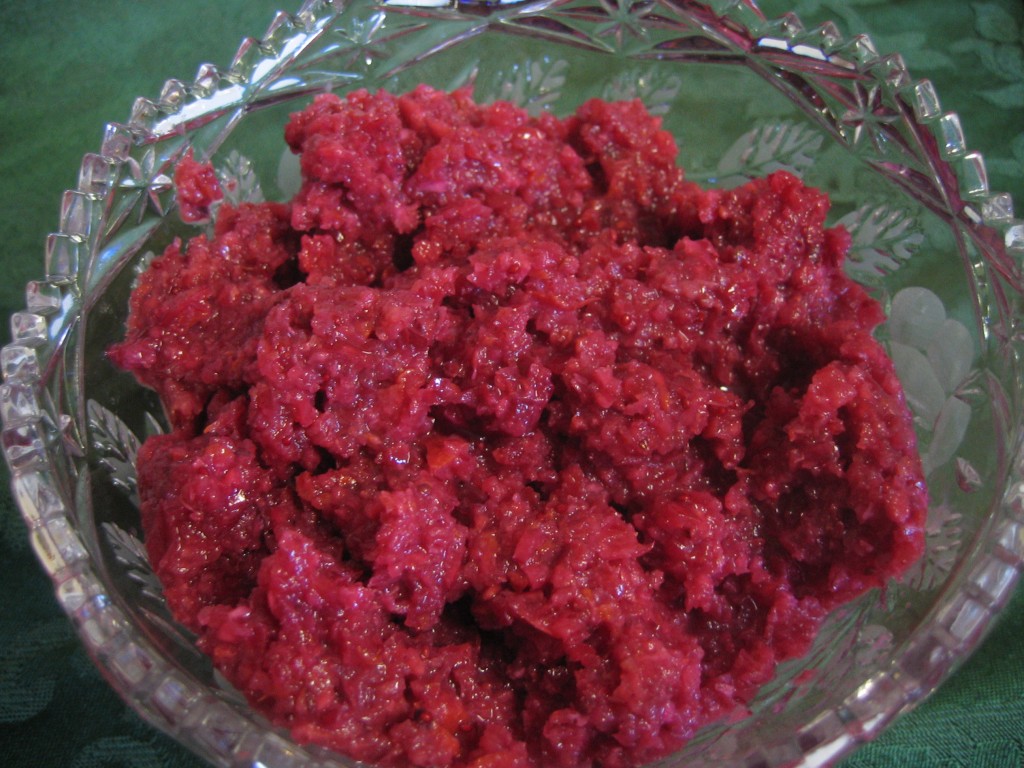Fermented Cranberry Relish

For those of you who want to twirl your culinary compasses, try this fermented recipe. Historically, most of our condiments were fermented (or cultured, or lacto-fermented- all basically the same thing)- from pickles to ketchup to soy sauce. The main goal of fermenting was preservation. Before people canned, they fermented food to keep for the winter. Fermented foods also have health benefits, including providing your digestive tract with probiotics (yep, those little things you take in expensive pill form now).
This is a great recipe to start your fermenting journey. Most people are already familiar with the tartness of cranberries and are therefore more receptive to the added fermented flavor.
After you’ve mixed up a batch, take some time to read more about the health and history of fermented foods. I suggest you start here and here.
- 1 bag fresh cranberries
- 1 whole orange
- 1-2 tbs whole spices (cinnamon stick, star anise, fennel, cloves, allspice, ect)
- 1/4 cup whey
- 1/4-1/2 cup sugar or rapadura
- 1 tbs sea salt
This recipe should be started at least 3 days ahead of when you are planning to serve the relish. A week would be better.
In a food processor or blender, combine cranberries and orange and any whole spices. Do it in batches if your bowl isn’t big enough. Process them to a medium consistency. You don’t want whole berries, but you don’t want a liquid either. Stir in whey, sugar, and salt. Remove to a quart mason jar. Using a meat pounder or a the bottom of a glass that is smaller than the mouth of the jar, pound the mixture down to release the juice. Keep smooshing and smashing until the liquid comes above the mixture. If you don’t think you have enough liquid, add a little water to cover. Be sure the relish is at least 1 inch below the top of the jar.
Screw on the lid and keep the jar at room temperature for 2-3 days. Start tasting it on the second day. When you like the flavor, transfer it to the fridge. It will last for several months.
The rate of fermentation depends on the temperature of your house. If it is warmer, the relish will ferment faster. If it is colder, it will take more time. If you house is very cold (like below 65°, like ours sometimes is before we turn the heat on), consider putting the relish in a warm oven, on top of a warm appliance (computer, fridge, TV), or in a dehydrator. Just don’t let it get to hot, or all the lovely little microbes will die. An ideal range would be 70°- 90°.
Tags: Cranberries, ferments/cultures, Foodcraft, raw, The Slow Kitchen

That looks so beautiful and bright! Love it!
Thank you for this great recipe!
I made this for Thanksgiving and it was awesome. I ate about 1/4 cup myself. I have been dabbling in home cheesemaking, so I had some nice whey from a Flora Danica cultured cheese for this recipe. Everybody at the table really liked it. Thank you for this wonderful recipe that I will keep using!